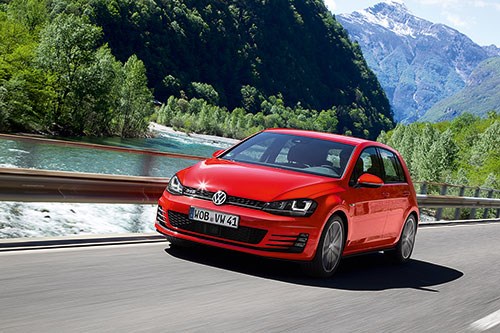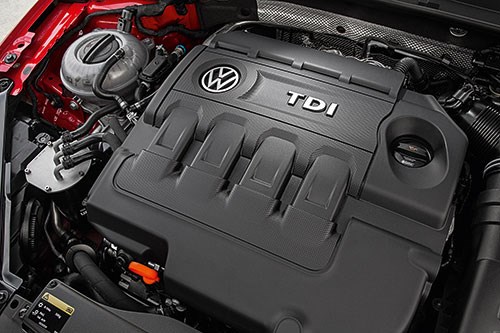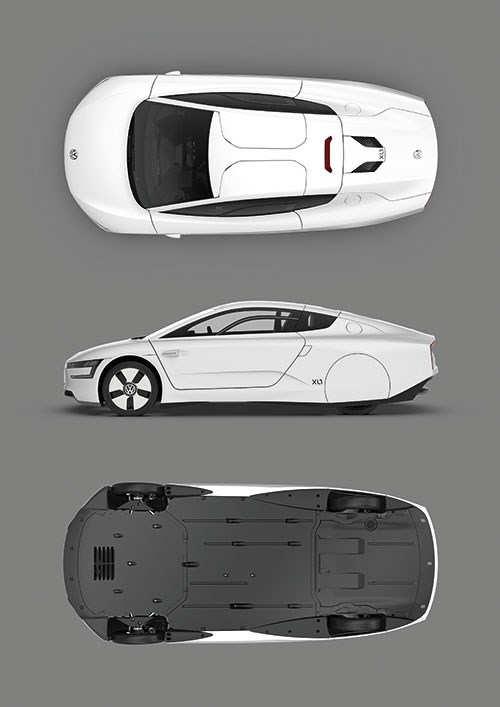Volkswagen Goes Common - But With a Difference
Creating products for its various brands and global markets once meant considerable complexity. So Volkswagen has decided to go common—while providing a considerable amount of flexibility.
Volkswagen AG is undertaking a product development strategy that is designed to drive efficiency throughout its portfolio—from its brands to its factories. This is a modular approach, one that allows the company to develop modular component sets that can be used to simplify not only the development of cars, but the selection of machine tools for its production plants. But more than modules, it is considered an “assembly kit” strategy, because the objective is to cover as much vehicle architecture space as is practical.
Consider: there is a 1.9-liter TDI engine that was developed. With time, as vehicles were being developed, powertrain engineers discovered that it wouldn’t quite fit as it was configured. So as time went on, there were 130 derivatives developed to accommodate various applications.
Consider: A bill of process was developed for a car. It indicated the order of how things would go together in a factory—this, then this, then . . . Turns out that there was a tendency for engineers for one program to have a different approach than another. Which means that the factory had to undergo a major change. As you may recall, there weren’t any Beetles built in the Puebla, Mexico, plant between September 2010 and April 2011. That’s because as they made the transition from the New Beetle (1998 to 2010) to the current Beetle, they had to transform the factory.
The plan is to change things like that. The goal is to have an approach where there is far more commonization both in product and process.
This is not, the people at Volkswagen insist, a “platform strategy.” That is often a situation where there is a platform on the bottom and a top hat on top. This goes beyond that, because the company wants to offer variation without undue complexity. Realize that right now the company offers some 310 different car models. (Realize that in addition to VW, the passenger car brands of the group include Audi, Bentley, Bugatti, Lamborghini, Porsche, SEAT, and Skoda.) It is not, they say, a “modular strategy.” Yes, there are modules. In fact, they are creating modules for Powertrain, Chassis, Electrics/Electronics, and Body & Trim.
But they are looking at how these various elements can go together without having a simple cookie-cutter approach to vehicle development. They don’t want what is sometimes referred to as “badge engineering,” where the only differences between one vehicle brand and another is the logo on the front and bits and pieces on the inside and outside of the car.
Volkswagen AG, the overall company, has assigned the development of kits to various brands. So there is the MQB, or Modular Transverse Kit, assigned to Volkswagen; the MLB, or Modular Longitudinal Kit, assigned to Audi; and the MSB, Modular Standard Car Kit, assigned to Porsche. There is a fourth assembly kit, too, for vehicles that are presently not in the company’s portfolio, NSF, or New Small Family, which is not yet assigned. NSF is reckoned to be for vehicles that are suitable in terms of size and cost for emerging markets, while the others are for the established markets.
According to VW spokesman Christian Buhlmann, the approach started with MLB at Audi; it covers vehicles ranging from the Audi A4 to the Volkswagen Toureag. (MQB is for cars like the Golf and Passat (the European version of that car, as the U.S. Passat was a special development for the U.S. market; it will become part of MQB in its next generation.).
And there is another acronym, MPB, which is the Group’s Modular Production System. This standardized approach to manufacturing, Buhlmann said, contributed to the viability of Porsche, when the comparatively small volume of vehicles was making it difficult to achieve much in the way of economies of scale.
In the case of VW, MPB makes it possible for the company to manufacture the Golf, Euro Passat and Tiguan (a crossover) on one assembly line, even though the wheelbases of the three vehicles are different (Golf: 2,637 mm; Passat: 2,712 mm; Tiguan: 2,604 mm). This is facilitated by common locations of clamping surfaces. Whereas previous vehicle designs had one- or two-element bodysides, with MPB and MQB vehicles are all two-part configurations, thereby making the setup of clamping and welding equipment uniform. The vehicles build in a common sequence, as well. For example, there used to be three positions on the assembly line where a cockpit could be installed; all MQB-based vehicles will have the cockpit load at the same spot.
One of the more interesting aspects of MQB is the area in the vehicle where there is a standardized dimension: from the center of the front axle to the accelerator pedal. Buhlmann said that some 60% of the value of a vehicle is found within that space—the powertrain, the HVAC unit, the axle, the steering system—yet it is an area that customers aren’t all that interested in (yes, they may be keen on the engine, but the axle?). As VW makes its own steering systems and axles, this is a whole lot of potential for parts sharing across a wide range of vehicles (remember that SEAT and Skoda have variants of Volkswagens in their lineups, too).
In addition to which, there is standardization in the powertrains for MQB: the EA 211 and EA 888, both gasoline engines, and the EA 288, a diesel. While there are variants within the engine families (e.g., EA 211 modules have been developed for a range of displacements, from a 1.0-liter, 65-hp engine to a 1.6-liter, 150-hp hybrid powertrain; there are three cylinder engines as well as four), the installation orientation of the engines is the same, thereby not only simplifying production, but also eliminating the need for components based on the installation angle (i.e., previously, the diesel engines leaned toward the back and the gas toward the front, which necessitated different exhaust manifolds).
VW has calculated that they’re reducing engine and transmission variants by 88% through the deployment of MQB.
It is important to know that dimensions including the wheelbase, track width and wheel sizes are variable within MQB. There is standardization without the price of vehicular homogenization.
In fact, MQB allows more variations than might otherwise be the case because they are able to achieve significant savings by spreading the 60% commonality across some five-million vehicles. It would be possible for them to offer a particularly configured vehicle, and if it doesn’t make it as such, it is not as catastrophic a case as it would be if it was completely special.
Buhlmann said that there are six essential aims of MQB:
• Increasing the company’s competitive position by having vehicles tailored for specific markets
• Safeguarding the worldwide product portfolio
• Having standardized manufacturing on a global basis
• Having flexible manufacturing plants (26 plants around the world will be setup to accommodate MQB)
• Attaining future CO2 targets (the powertrain developments were made with future regulations in mind)
• Optimization of design proportions—some VW front-wheel drive vehicle designs were criticized for having too much front overhang, but as that’s not a standardized dimension, they can achieve better balance
Whether it is a VW or an Audi or a SEAT or a Skoda made with the MQB Modular Traverse Kit, there will be differences. Buhlmann: “Every brand will make its own management decisions regarding what kind of car they want to do, what its requirements are. They will look into the kit and determine what’s possible.”
He also pointed out that by taking the standardized-but-variable approach, they’re assured of the profitability that results from the enormous economies of scale.
RELATED CONTENT
-
Jeeps Modified for Moab
On Easter morning in Moab, Utah, when the population of that exceedingly-hard-to-get-to town in one of the most beautiful settings on Earth has more than doubled, some people won’t be hunting for Easter eggs, but will be trying to get a good look at one of the vehicles six that Jeep has prepared for real-life, fast-feedback from the assembled at the annual Easter Jeep Safari.
-
Engineering the 2019 Jeep Cherokee
The Jeep Cherokee, which was launched in its current manifestation as a model year 2014 vehicle, and which has just undergone a major refresh for MY 2019, is nothing if not a solid success.
-
GM Is Down with Diesels
General Motors is one company that is clearly embracing the diesel engine.


.jpg;width=70;height=70;mode=crop)










